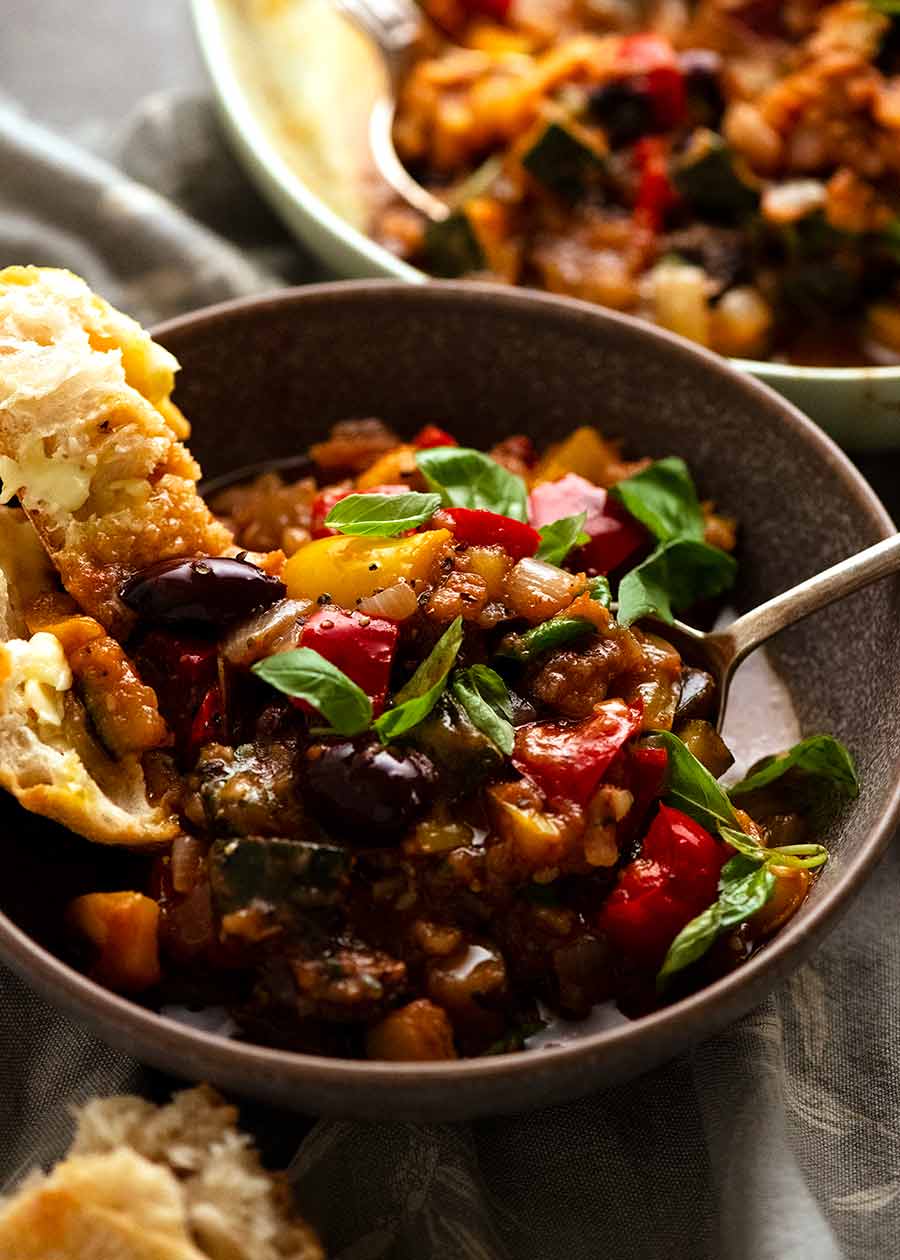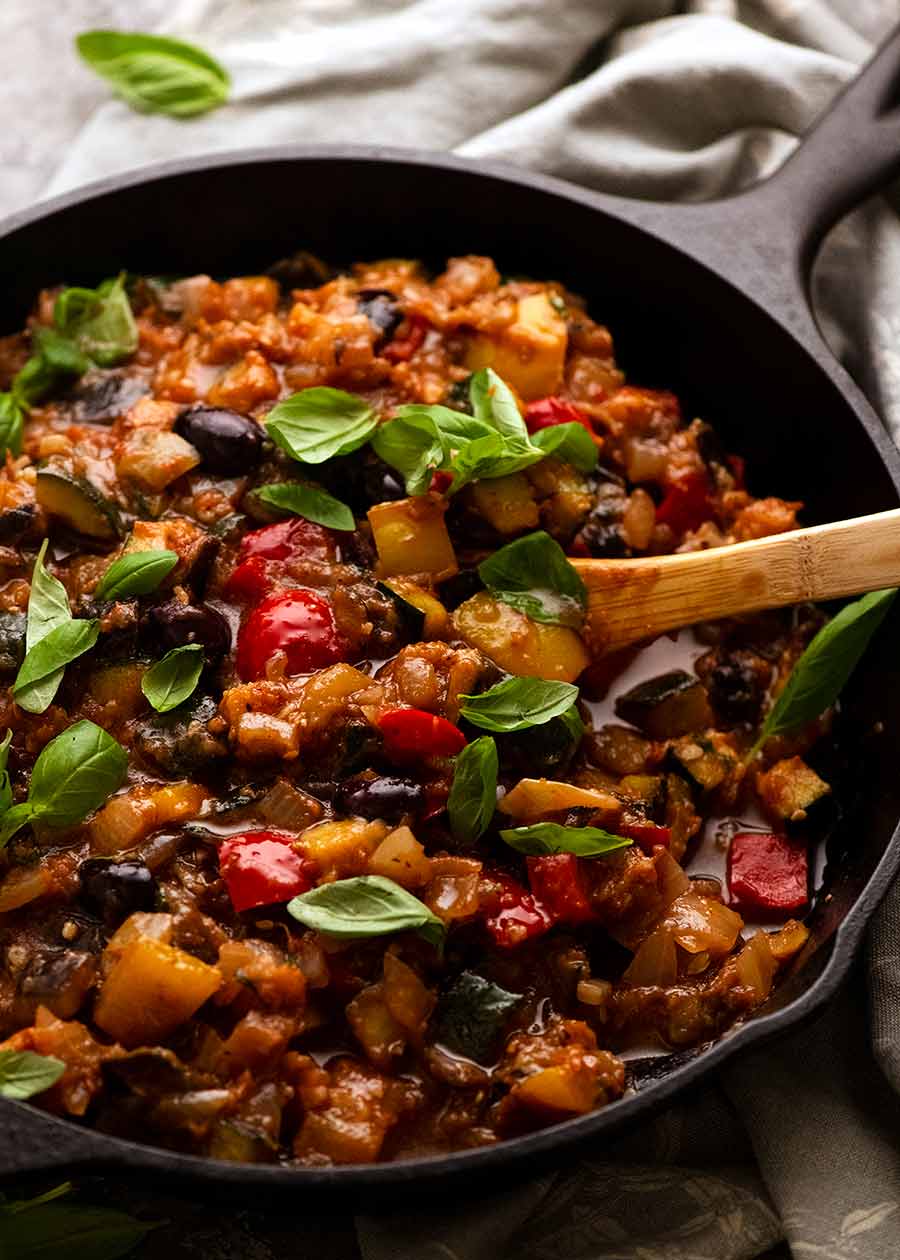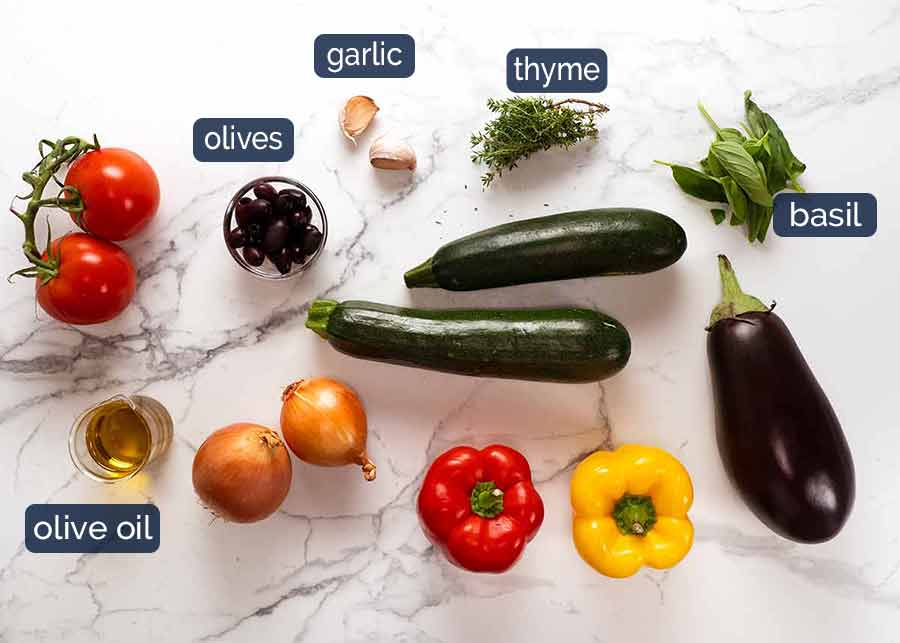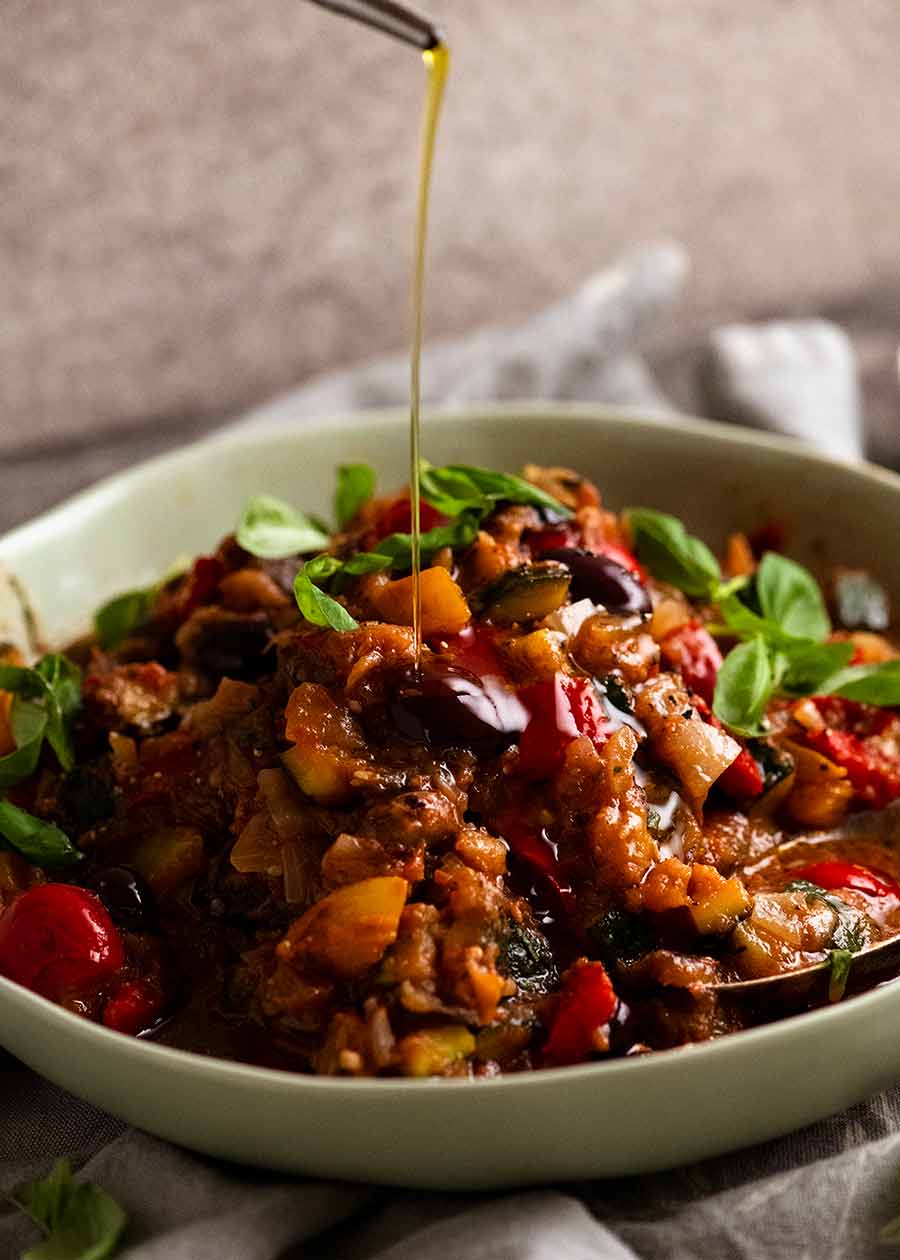Ratatouille: French vegetable stew
I’m not going to lie to you. I was never one to jump up and down with anticipation at the thought of Ratatouille. You’d never catch me ordering it at a restaurant, and it’s not the first thing I’d think of making using leftover vegetables. It just never sounded, well, exciting. How terribly wrong I’ve been all this time. It turns out I just never knew how to make it properly, and how good it can be when it is. Look, ma! Finally growing up! 😂 The single most important thing that differentiates meh Ratatouille from holy-cow-this-amazing Ratatouille? Pan-searing each vegetable separately before bringing them together in a pot to braise. Most recipes will have you (attempt to) sauté everything in one pot at the same time but you will achieve a far better outcome by cooking them separately. This way offers much better control over how much each vegetable gets cooked so you don’t end up with a pot of overcooked mush (the #1 Ratatouille offence, right there!). You also get some browning on the vegetables, and as we know, colour = flavour!!
What is ratatouille?
Ratatouille is a vegetable stew originating from Provence, a part of France on the Mediterranean coast known for its warm climate and excellent regional food. Vegetables grow in abundance here, and many of the area’s most famous dishes make the most of them. Nicoise salade, soupe au pistou (vegetable soup with pesto), pissaladiere (onion and anchovy “pizza”) and olive tapenade are just some of Provence’s greatest vegetable-driven hits (recipes coming one day, I promise 😂)! The most famous of all Provencal vegetable dishes though would have to be Ratatouille. Originally a food of the poor, it is a braise made from a medley of summer vegetables: eggplant, zucchini, peppers, tomatoes, herbs and whatever else is at hand. Today it’s made less for frugal reasons and simply because it’s a delicious, wholesome dish in its own right. With a tomato-based sauce and lightly flavoured with a hint of fresh herbs (thyme and basil, in this case), it’s a dish that celebrates great produce. Part of the spirit of the dish is its flexibility – it’s intended to make use of the summer harvest’s bounty, whatever it might be. So for us modern folk, it presents an excellent means to use up leftover vegetable bits and bobs in the fridge to serve up as a main or side dish! Bonus: You get to feel totally virtuous eating so much veg in one sitting!
What goes in Ratatouille
Here’s what I put in my Ratatouille, but don’t feel limited to these vegetables! While these are the most traditional Ratatouille inclusions, any suitable vegetables that can be sautéed will work a treat – think mushrooms, fennel, celery, squash etc. I honestly wouldn’t hesitate to throw in a handful of wiltable greens either (like kale, spinach etc) if that’s what you have!
Vegetables – I used an eggplant, 2 capsicums / bell peppers (one red, one yellow = colour splash!) and 2 zucchinis (courgettes);Tomatoes (for the sauce) – Using a fresh tomato to me seems appropriate for a dish like Ratatouille where the whole idea is to celebrate fresh produce, but feel free to use canned tomato or passata. If you do, use a good brand please (I’m partial to Mutti). This is the sauce for this dish, so don’t ruin it with cheap, sour, flavourless canned tomato!! Onion and garlic – The flavour base. You’d be hard pressed to find a savoury dish on this website that doesn’t start with these two!!Fresh thyme and basil – Thyme is for the braising, and basil for a fresh finish. Plenty of alternatives exist here so don’t fret if you don’t have these two exact herbs. A sprinkle of dried oregano instead would be totally at home, or even mixed herbs for that matter. To finish, fresh parsley would go down a treat;Olives – For little salty pops littered throughout the stew. Not too many, so they don’t dominate. They’re backing vocals here to the lead singer veggies! 😂
How to make Ratatouille
As tempting as it is to throw all the vegetables into the pot and cook them at the same time, don’t! That’s the path to a big pot of flavourless mush. You simply can’t get any colour on them this way (they just go watery and stew in their own juices) and because each vegetable takes a different length of time to cook, you will inevitably overcook some. Why sauté in a skillet then braise in a different pot? Simply for a better result. A skillet is ideal for sautéing here thanks to the thick metal (better heat retention and heat transfer) and its shallow sides. A taller pot meanwhile is needed later to hold all the vegetables to stew together. If you try to sauté in the pot, it will take longer and tend to stew in its juices as it cooks due to the high sides, discouraging colouration. We want the stewing action later, not while sautéing! The salt also tenderises the flesh of the eggplant and makes the eggplant absorb less oil when cooking. Common wisdom also claims that salt removes the bitter taste in eggplants. However the reality is modern eggplants have had any bitterness bred out of them so it’s not a necessary step today. Unlike when making like eggplant “sheets” for things like Moussaka, there’s no need to pat the water off before cooking. It will just evaporate when we start sautéing. Also, we want to keep the salt for flavour; Once done, transfer the eggplant to a large pot in which all the vegetables will be combined to braise. Add each veg to this pot as you sauté them off. See below for why we use a separate pot; To finish it off, just stir through the basil and it’s ready to serve! Either spoon it into a big shared dish for people to help themselves, or into individual bowls. I also like to add a final drizzle of extra virgin olive oil and an extra sprinkling of fresh basil.
How to serve Ratatouille
Ratatouille is one of those fabulous dishes that can be served either as a main or side dish. It also happily keeps for days, being meat and dairy-free. In fact, the pictured Ratatouille was consumed by me over the course of 5 days in various forms, including as:
A meal in its entirety – In a bowl eaten with with crusty bread on the side!;A vegetable side dish alongside a protein-based main – white meats especially, ie. poultry, pork or seafood;Bruschetta / crostini – OK, while I wished you to imagine an impressive platter of little Ratatouille crostini that I served to friends as a canapé at a French-themed cocktail party, truth be told that did not actually happen. Instead, picture me piling some Ratatouille on to a (smallish) slice of toasted bread, which I munched on for a snack as I unpacked the dishwasher in my daggy sweat pants. That’s closer to the truth – but it was no less enjoyable!!😂A fluffy egg white omelette stuffing – Ratatouille instead of the asparagus stuffing in the recipe. (PS. Egg white omelettes don’t get cooked around here purposefully. They’re just a great way to use up leftover egg whites after making things with the yolks. I’m no cholesterol-watching obsessive!);An accompaniment for fish (6 minute dinner!) – Literally the fastest meal ever. I just pan-fried a piece of fish and piled over the Ratatouille. Think of it as a salad, side and salsa sauce all in one! So good!
So, there you have it. These are just a few ideas that shows how Ratatouille can be the gift that keeps on giving. I can’t believe I ever thought it was so bland and boring! 😂 Consider me a convert. 🙂 – Nagi x
Watch how to make it
More French classics!
Life of Dozer
One of the few things to come out of this kitchen that Mr Dozer didn’t get to try – Lobster Thermidor!!! Very, VERY lucky to have a friend who shares freshly caught local lobsters with me. When he turned up the other day with 5 freshly caught lobsters, what else was I to do other than throw an impromptu Lobster Dinner Party?? 🤷🏻♀️ And before you ask … yes, the recipe is coming! 🙂








